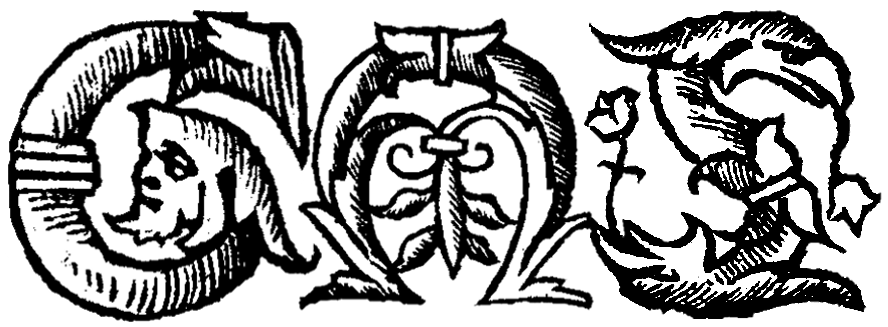"Can you make out twilight's ruins?" | هل عرفت الغداة من أطلال
Introduction to the Text
The advent of Islam precipitated a breakthrough in historiography. In the centuries that followed the religion’s arrival, linguists, lexicographers, and chroniclers spared no effort to write all they knew of the Arabs’ pre-Islamic days, much of it preserved in verse. This poetry commemorated landmarks of the past—events not so much faithfully recorded as artistically imagined to drive home their import.
One such event, the Basūs War (ca.494-534), comes to us by way of several poems. This legendary 40-year war between the sibling tribes of Taghlib and Bakr (two sons of Wāʾil ibn Hind) broke out with the murder of the Taghlibs’ leader, Wāʾil ibn Rabīʿah, better known as Kulayb. Not long before, Kulayb’s aunt-in-law, al-Basūs bint Munqidh, hosted Saʿd ibn Shumays as a resident under her protection. Saʿd’s she-camel, al-Sarāb, pastured with those of Jassās ibn Murrah, her nephew and Kulayb’s brother-in-law. According to medieval transmitters of this story, the expressions “ashʾam min al-Sarāb” (“worse omened than al-Sarāb”) and “ashʾam min al-Basūs” (“worse omened than al-Basūs”) derive from what ensues.
Noticing the unfamiliar camel among his herd, Kulayb warned Jassās that al-Sarāb was not welcome to pasture near his land. Jassās responded in kind that none of his camels would pasture without her. Kulayb then threatened that if he saw her again, he’d stick an arrow in her breast. If he did so, said Jassās, he’d stick an arrow in his neck. Despite this serious promise, Kulayb fatally struck al-Sarāb when again encountering her. al-Basūs wailed her humiliation to her nephew, vowing to kill Kulayb’s most prized camel, Ghilāl, in retaliation. Jassās set his mind to killing Kulayb, and did.
Following Kulayb’s murder, Taghlib leadership transferred to his brother, ʿAdiyy ibn Rab īʿah, styled “al-Muhalhil” (“The Refiner”) on account of the refinement of his poetry. He maintained a killing streak for several decades to eventually see the deaths of Jassās and his half-brother, Hammām. A third half-brother, al-Ḥārith ibn ʿUbād (or ʿAbbād), who had avoided the conflict entirely until this point, now intervened, dispatching a letter to al-Muhalhil. The message, sent with al-Ḥārith’s son, Bujayr, offered al-Muhalhil the choice of either slaying Bujayr and finally ending the bloodshed, or releasing him to likewise establish peace. al-Muhalhil chose a third option, proclaiming “buʾ bi-shisʿ naʿl Kulayb!” (“Take payback for Kulayb’s shoelace!”) before slaying the emissary.
The following poem comprises al-Muhalhil’s response to al-Ḥārith’s elegy. Here, the Taghlibs’ leader mourns his brother’s murder and responds to al-Ḥārith’s call for revenge with a refrain of his own: “Qarribā marbaṭ al-Mushahhar minnī,” (“Bring me al-Mushahhar’s harness”), al-Mushahhar being his answer to al-Naʿāmah, al-Ḥārith’s horse. As with others of their time, the poem stands out for its ferocious expressions of jāhilī or pre-Islamic values, values the new religion explicitly rejects, including engagement in ceaseless, disproportionate feuding and the murder and plundering of innocents.
Though he survives this final battle between the two tribes, al-Muhalhil meets a cruel demise in due course. According to one narration, he dies as a captive to Mālik ibn Ḍubayʿah (of Bakr), dying of thirst in one version, of contamination in another (Ibn al-Athīr 1:485). Another report finds him ambushed and killed by two of his servants (Nuwayrī 15:309–10).
Further Reading
Fück, J.W., “al-Basūs”, in: Encyclopaedia of Islam, Second Edition, Edited by: P. Bearman, Th. Bianquis, C.E. Bosworth, E. van Donzel, W.P. Heinrichs, 2012.
Ibn al-Athīr, ʿA. 2017. al-Kāmil fī al-Tārīkh, ed. ʿU. Tadmurī, vol. 1. Beirut: Dār al-Kitāb al-ʿArabī, 427-85.
Khalidi, T. 1994. Arabic Historical Thought in the Classical Period. Cambridge: Cambridge University Press.
Nabawī, ʿA. 1989. Dīwān Banī Bakr fī al-Jāhiliyyah. Cairo: Dār al-Zahrāʾ li-al-Nashr bi-al-Qāhirah.
al-Nuwayrī, A. 2004. Nihāyat al-Arab fī Funūn al-Adab, ed. M. Qumayḥah and Ḥ. Nūr al-Dīn, vol. 15. Beirut: Dar Al-Kotob Al-ilmiyah, 303-10.
Rosenthal, F. [1952] 1968. A History of Muslim Historiography. 2nd rev. ed. Leiden: Brill.
Credits
Text based on Cheikho, L. 1890. Kitāb Shuʿarāʾ al-Naṣrāniyyah. Vol. 1. Beirut: Maṭbaʿat al-Ābāʾ al-Mursilīn al-Yasūʿiyyīn fī Bayrūt, pages 273-276.Translation by Sherif AbdelkarimEncoded in TEI P5 XML by Danny SmithSuggested citation: al-Muhalhil. ""Can you make out twilight's ruins?"." Global Medieval Sourcebook. http://sourcebook.stanford.edu/text/can-you-make-out-twilights-ruins. Retrieved on May 17, 2024.

